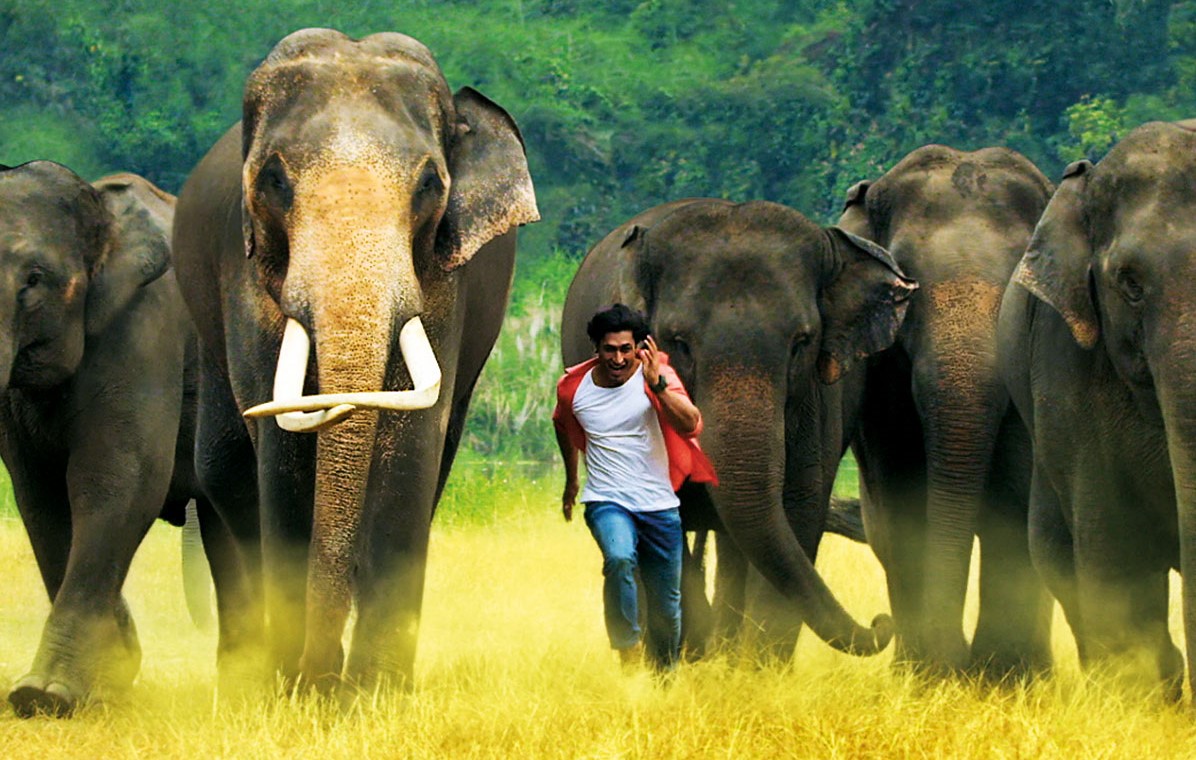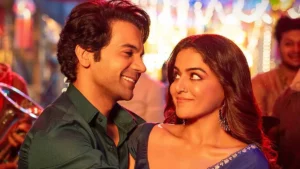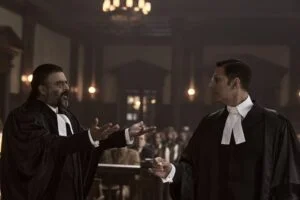
There are artists in cinema who face the weirdest of occupational hazards. As a part of his choice, Diljit Dosanjh will never get to play a non-Sikh character. Prakash Belavadi is forever the South Indian man – at times Malayali, otherwise Tamilian. There were actors who forever played household helps or business tycoons. Actor Vidyut Jammwal, on similar lines, faces the plague of what he loves the most – martial arts for a fact it refuses to go off his being. Jammwal to martial arts is what Helen was to cabaret numbers. Therefore, it is difficult to disassociate each but Junglee takes the dare hands on. Vidyut Jammwal plays a vet in the film for a full duration of 60 seconds and for the remaining 114 minutes, the man is – wait for it – a martial artist.
Jokes apart, Junglee directed by Chuck Russel is about Raj’s (Jammwal) family that lives in a jungle where they run a sanctuary. There are in close harmony with nature and all the animals around, especially elephants. Raj seems to have resolvable, Bollywood-ish differences with his father over his mother’s death. The father-son duo is all pro-animal rights on the surface and the film comes with a noble message that animals are not supposed to be hunted or poached. Then there is the prime villain (Atul Kulkarni) who finds great joy in doing exactly that. Later to close the Hindi film arc, we also see two women (one a mahout, another a journalist) – both somewhat smitten by the agile Raj. Boy, he even speaks to the animals in whispers. Strangely enough, the only actor whom I can imagine pulling off this level of idiocy is Jammwal’s own soul brother Tiger Shroff who, like Junglee’s leading man, is a martial artist by default and gets possessed by a dancing Michael Jackson’s spirit every now and then. Okay, let’s not divert any further.
For starters, the problem with Junglee is not the lack of freshness. It is fairly a fresh product, at least in terms of the visuals that it offers. The issue is with its simplistic tone and the writing which harps only on characters that are either white or pitch black. People are either sweet to diabetic levels or evil in an ‘80s sort of fashion – yes, they show up in leather outfits, boots, wigs, black shades and every other cringe-worthy materials out there. The good peeps do what they are classically assigned to do. They eat vegetarian food and live comfortably in what looks like a fairly developed forest area in Orissa. There’s mobile network even in the middle of dense jungles. They make rangolis on elephant’s trunks. (How about taking their consent before doing this sorcery?) They talk to animals in ways that would put Mowgli to shame. They have Ayurvedic remedies to almost every death threat possible. They ride dilapidated motorbikes with a fuel tank as deep as one of Saudi Arabia’s oil wells. Drinking local liquor (toddy) might be the most inappropriate thing they would ever attempt in life. With no tourist in sight, I wonder what might have been Raj’s father’s full-time job besides running the sanctuary. You can’t fill your stomach with kindness, can you?
The bad guys in Junglee are not any smart either. Yes, it is a pleasure to watch Atul Kulkarni but that is more because he is Atul Kulkarni and I would gladly watch him in anything other than cancerous propaganda films. On papers, it might have sounded like an interesting character – a hunter who gives the animal a chance to retaliate. The hunter seems to inculcate an ethic in his method but the film, in its attempt to give such shades to its villain, does not close loops as it ends. There is also a forest ranger (played by Akshay Oberoi) who is somewhat grey in characterization. Given the counters that he offers with respect to his wrong-doings, I was quickly set thinking of how the man would have been a messiah in a different Indian film.
For a film that has listed Cartoon Network and POGO as partners, I am aware that one cannot expect Junglee to be cerebral beyond a point. The issue in its writing is that it feels incomplete even in its logic-less, fantasy-like premise. Take, for instance, the twist surrounding a stolen mobile phone is straight from the ‘60s. (Now do not tell me that cellphones are recent discoveries. That is not the point.) There is also a reporter Mira (Asha Bhat) who records and live streams almost every scandalous event that unfolds in and around a dense jungle. Some digitalized forest that is, I reckon.
As the film reaches the finale through a series of boring and predictable moments, there were a bunch of things that appealed to me – Jammwal’s dapper but absolutely forest-unfriendly wardrobe (abundant in white and pink), Pooja Sawant’s disarming smile and an elephant called Didi who runs in lightning speed. If Jammwal had to race his bike at 120 km/ph to reach the villains’ den on time, the huge mammal does the same thing. So, what if the filmmaker didn’t deem it fit to showcase her efforts on the big screen? After all, a female elephant is better off standing on the aisles with rangolis on her trunks, isn’t it?
While Chuck Russel’s Junglee scores half marks for its intent, Vidyut Jammwal does a fairly okay job with all the running and leaping that he does. However, no amounts of trickery and fake goodness can convince me that it is okay to chain wild animals. Also for the entire action sequences that they have spun around the main story, make us wonder how the writers could have come about with the concept in the first place. Junglee, set in Orissa is incidentally shot in Thailand. They learn Malayali martial arts and have surnames and festive wear that are linked closely to Kerala. Basically, you get no head or tail of what these folks are up to besides the fact that they have been given a brief make a film to condemn elephant poaching and ivory smuggling. Okay then!
Rating: ★★

